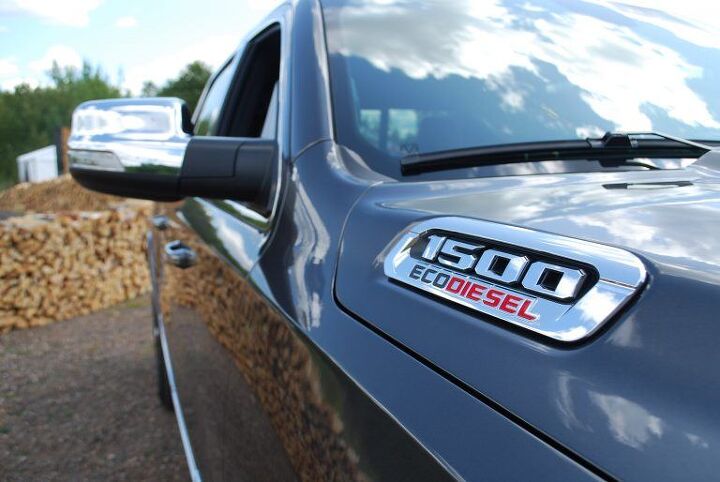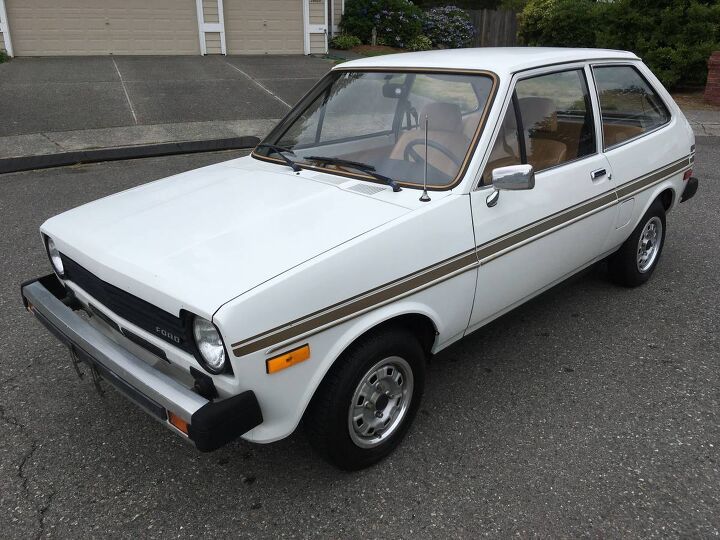#FuelEconomy
Any Takers? Docs Herald Mazda 6 Diesel Introduction
The road to America is often a long one, and the 2.2-liter diesel four-cylinder that finally set up shop in the Mazda CX-5 last year took a Donner Party-like detour after leaving Japan.
The Skyactiv-D engine was over half a decade late in arriving on these shores, and when it finally did — cleared by the EPA after certain modifications — journalists were underwhelmed by its power and economy. Now, it’s the midsize Mazda 6’s turn to try ditching gasoline. Will anyone be in line to greet it?
Overseas Mazda MX-5 Gains the Mildest Bit of Electrification
Mazda bigwigs and engineers are still on the fence when it comes to the next-generation MX-5 Miata’s powertrain, but the current generation is still capable of learning new tricks.
The automaker’s European-market MX-5s, at the very least, will take on a standard energy recovery system for the 2020 model year that carries some of the trappings of a hybrid. What the system can’t do is send any amount of electric power to the drive wheels — though it can reduce the load on the conventional gasoline engine.
2020 Nissan Titan Fuel Economy Figures Emerge
What can a nine-speed automatic do for a full-size pickup that once carried a seven-speed unit and a reputation for guzzling fuel at a prodigious rate?
That’s a question answered not by the EPA, which hasn’t gotten around to posting updated MPG figures for the refreshed 2020 pickup, but by its counterparts north of the border. Natural Resources Canada has the new figures on file, but you’re out of luck if you’re only interested in rear-wheel drive Titan models. For 2020, Canadians aren’t allowed to have those.
U.S. Fuel Rollback Earns Pushback From Scientific Advisory Board
The Environmental Protection Agency’s (EPA) Scientific Advisory Board (SAB) is once again applying pressure on the Trump administration’s proposed fuel economy rollback. Similar to the complaints issued by a coalition of scientists back in March of 2018, the board expressed concerns that significant weaknesses exist in the analysis underpinning the plan that should be addressed before any rules are made final. A draft report was circulated earlier in the week, with the SAB scheduling a public meeting meeting on January 17th.
“[The] EPA always appreciates and respects the work and advice of the SAB,” the U.S. regulatory agency said in a statement. “When implemented, the [rollback] will benefit all Americans by improving the U.S. fleet’s fuel economy, reducing air pollution, and making new vehicles more affordable for all Americans.”
EPA Gets Around to Rating the Jeep Wrangler EcoDiesel
As everyone in your Twitter feed screams for revolution, evolutionary advancements in technology (and other things) are still proving capable of generating big gains for society. For new vehicle buyers, too.
Jeep’s Wrangler Unlimited EcoDiesel is a case in point. Launched for the 2020 model year, the oil-burning off-roader nets buyers 260 horsepower and a whopping 442 lb-ft of torque — some 307 lb-ft more than a base Wrangler of 30 years ago. Despite boasting only a half-liter of additional displacement and weighing significantly more than a 1990 Iron Duke model, the EcoDiesel returns an extra 8 mpg in combined driving.
Let’s take a look at what the EPA had to say about Jeep’s newest offering.
Amid Emissions Clampdown, Brits Face Reduced Access to 34 MPG Mazda
The roadster news just keeps getting worse for British drivers. As hyper-stringent Euro 6 emission standards come into effect in the new year, drivers in the UK will have a harder time getting their hands on a vehicle we all know and love on this side of the Atlantic.
That vehicle is the Mazda MX-5. Available with a standard 2.0-liter four-cylinder on this side of the pond, Brits can have theirs in two flavors: 1.5-liter and 2.0-liter. Come 2020, the automaker will do its best to dissuade buyers from choosing the larger mill.
MPG Figures Are In for Ford's Greenest Utility Vehicles
The Mustang Mach-E isn’t yet available for public consumption, leaving a trio of hybrid SUVs as the brand’s electrified vanguard. For 2020, the Escape returns to its hybrid past, joined by the newly electrified Explorer and its plug-in Lincoln Aviator twin.
EPA figures have been revealed for all of these beasts, so let’s take a look at what gas savings that additional expenditure can get you.
Hyundai's Smallest CUV Probably Out-MPGs Your Car
The Hyundai Venue, a bottom-rung, A-segment crossover of such a diminutive size that you’d be forgiven for thinking it showed up in the wrong market by accident, has undergone testing by the Environmental Protection Agency.
Stretching one inch less than a Kia Rio hatch when measured stem to stern, the Venue is part of Hyundai’s effort to eliminate white space in its U.S. lineup while providing young car buyers with an attainable place to start climbing the Hyundai product ladder. These buyers, the EPA confirms, will not have to worry about lofty fuel bills.
Gas War: Trump Confirms U.S. Will Revoke California Fuel Waiver
While a considerable portion of Donald Trump’s Twitter announcements aren’t worth paying much attention to, he does occasionally slip some actual information in there. This week, the nugget was the confirmation that his administration intends to revoke California’s federal waiver on emissions — stripping the state of its ability to self-regulate and readying America for the gas war’s main event.
The Environmental Protection Agency was already known to be making preparations to do exactly this, but the president’s Wednesday posting made things crystal clear. “The Trump Administration is revoking California’s Federal Waiver on emissions in order to produce far less expensive cars for the consumer, while at the same time making the cars substantially SAFER,” he wrote.
Gas War: EPA Head Suggests Fuel Rollback May Have Some Wiggle Room
Environmental Protection Agency Administrator Andrew Wheeler weighed in on the gas war this week, issuing some firm language on the matter during a visit to Chattanooga, Tennessee. His words were softer upon returning to Washington, where he reminded everyone that the EPA has made no formal decisions on the matter and suggested there could still be room for compromise.
Unfortunately, locating that happy middle ground has been a bit of a problem. Despite the fuel economy rollback’s status as a proposal, hard lines have been drawn in the sand between the Trump administration and California’s regulatory bodies. The Golden State’s compromise was to delay the Obama-era targets by one year. California also recruited municipalities, U.S. states, and automotive manufacturers to pledge their support of the plan, resulting in a handful of carmakers finding themselves on the business end of an antitrust probe.
Meanwhile, the Trump administration’s compromise has been nonexistent. Wheeler’s words suggest that might be because everyone is still making up their minds… but not before he gently razzed the West Coast for being shortsighted an singleminded.
Gas War: Antitrust Probe Opened Into Automakers Endorsing California Emissions Pact
The Justice Department has opened an antitrust probe into four automakers that formed a pact with California to compromise on tailpipe emissions, effectively circumventing federal regulators, last July.
Over the summer, Ford Motor Co., Honda Motor Co., BMW AG and Volkswagen Group announced a joint agreement with the California Air Resources Board to adhere to fueling standards slightly lower than Obama-era rules but still significantly higher than the Trump administration’s proposal from 2018. The Justice Department is seeking to determine whether or not that qualifies as a violation of federal competition laws.
12 MPG in 10 Years: Ford Explorer Hybrid's Fuel Economy Figures Come to Light
Barring the development of electric and plug-in hybrid vehicles, the slow march towards better fuel economy, especially in larger vehicles, has been just that: slow. Yet incremental improvements continue, and the latest large family vehicle to see a darker shade of green is Ford’s new-for-2020 Explorer.
Now bearing rear-drive architecture it shares with the Lincoln Aviator, the Explorer drives into its sixth generation with a hybrid and high-performance model in tow. The greenest of the bunch, unlike the Aviator, is not a plug-in proposition, so fuel economy gains are limited. It’s up to buyers to decide if the just-released EPA numbers are worth the extra coin.
Trucks, Fuel Economy, and the Desire for More
There’s a Consumer Reports study making the rounds that reveals owners of trucks and large SUVs wish for better performance at the pump. Please pick yourself up off the ground. In fact, 73 percent of surveyed drivers who own such a vehicle wish for more MPGs in their next vehicle, which is not surprising given that large vehicles return, on average, below-average fuel economy.
Interestingly, the Detroit Three find themselves in the midst of an MPG war with their full-size, light-duty diesels. Mild hybrid Ram 1500s are here, and Ford has a hybrid F-150 in the works. Both Ford and GM have fully electric full-sizers in development. The General just introduced a four-cylinder half-ton (with an admittedly lackluster EPA rating).
While it’s understandable that owners of large vehicles would wish for lower fuel costs, the study fails to ask why owners want an improvement in their gas bill.
Rare Rides: The 1978 Ford Fiesta, a German Car
Ford has executed an on-then-off strategy with regard to its Fiesta offering in the North American market. Currently in off mode, your local Ford dealer encourages you to look at the sporty and capable first-ever third-world offering EcoSport instead.
But today we’re stepping back in time to 1978 to take a look at the genesis of Fiesta. The Fiestasis, if you will.
Gas War Update, Choose a Side Edition
According to recent reports, there’s trouble with the White House’s fuel economy rollback. The Trump administration is said to have been meeting with automakers, asking them to stand behind its proposal to freeze economy standards at about 37 mpg until 2026. The New York Times indicates it was an act of desperation, spurred by claims that Mercedes-Benz was on the cusp of supporting the California compromise. Based on existing standards, which would raise the average fuel economy of new cars and trucks to 54.5 miles per gallon by 2025, the deal would delay its targets by one year.
Honda, Ford, Volkswagen, and BMW previously agreed to support California’s proposal in July. However, the deal is non-binding if the White House decides to push through a rollback, and most of the rhetoric being used by the industry seems more focused on a joint standard.
“A 50-state solution has always been our preferred path forward and we understand that any deal involves compromise,” read the automakers’ joint statement.”These terms will provide our companies much-needed regulatory certainty by allowing us to meet both federal and state requirements with a single national fleet, avoiding a patchwork of regulations while continuing to ensure meaningful greenhouse gas emissions reductions.”





























Recent Comments